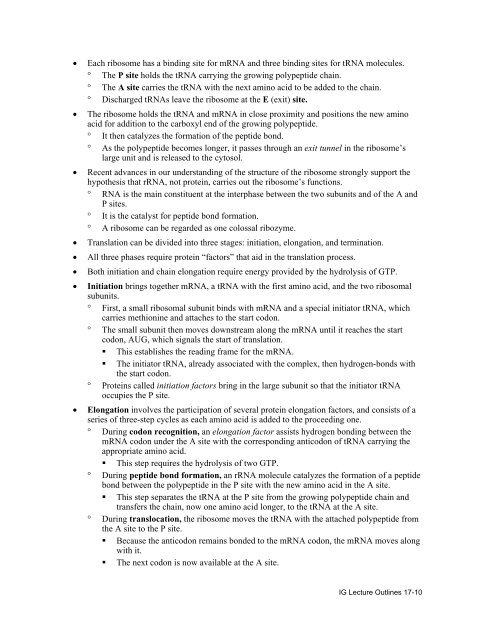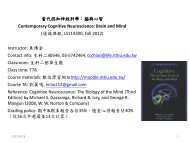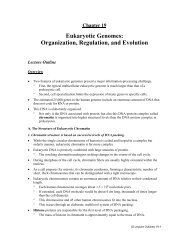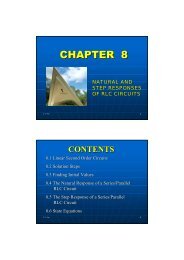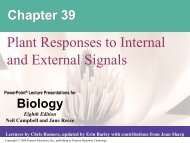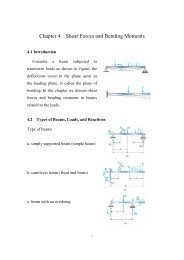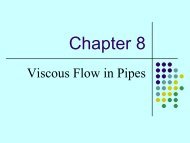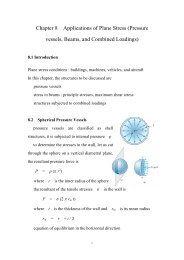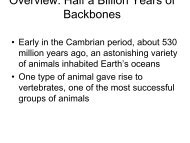CHAPTER 17 FROM GENE TO PROTEIN
CHAPTER 17 FROM GENE TO PROTEIN
CHAPTER 17 FROM GENE TO PROTEIN
- No tags were found...
You also want an ePaper? Increase the reach of your titles
YUMPU automatically turns print PDFs into web optimized ePapers that Google loves.
• Each ribosome has a binding site for mRNA and three binding sites for tRNA molecules.° The P site holds the tRNA carrying the growing polypeptide chain.° The A site carries the tRNA with the next amino acid to be added to the chain.° Discharged tRNAs leave the ribosome at the E (exit) site.• The ribosome holds the tRNA and mRNA in close proximity and positions the new aminoacid for addition to the carboxyl end of the growing polypeptide.° It then catalyzes the formation of the peptide bond.° As the polypeptide becomes longer, it passes through an exit tunnel in the ribosome’slarge unit and is released to the cytosol.• Recent advances in our understanding of the structure of the ribosome strongly support thehypothesis that rRNA, not protein, carries out the ribosome’s functions.° RNA is the main constituent at the interphase between the two subunits and of the A andP sites.° It is the catalyst for peptide bond formation.° A ribosome can be regarded as one colossal ribozyme.• Translation can be divided into three stages: initiation, elongation, and termination.• All three phases require protein “factors” that aid in the translation process.• Both initiation and chain elongation require energy provided by the hydrolysis of GTP.• Initiation brings together mRNA, a tRNA with the first amino acid, and the two ribosomalsubunits.° First, a small ribosomal subunit binds with mRNA and a special initiator tRNA, whichcarries methionine and attaches to the start codon.° The small subunit then moves downstream along the mRNA until it reaches the startcodon, AUG, which signals the start of translation.• This establishes the reading frame for the mRNA.• The initiator tRNA, already associated with the complex, then hydrogen-bonds withthe start codon.° Proteins called initiation factors bring in the large subunit so that the initiator tRNAoccupies the P site.• Elongation involves the participation of several protein elongation factors, and consists of aseries of three-step cycles as each amino acid is added to the proceeding one.° During codon recognition, an elongation factor assists hydrogen bonding between themRNA codon under the A site with the corresponding anticodon of tRNA carrying theappropriate amino acid.• This step requires the hydrolysis of two GTP.° During peptide bond formation, an rRNA molecule catalyzes the formation of a peptidebond between the polypeptide in the P site with the new amino acid in the A site.• This step separates the tRNA at the P site from the growing polypeptide chain andtransfers the chain, now one amino acid longer, to the tRNA at the A site.° During translocation, the ribosome moves the tRNA with the attached polypeptide fromthe A site to the P site.• Because the anticodon remains bonded to the mRNA codon, the mRNA moves alongwith it.• The next codon is now available at the A site.IG Lecture Outlines <strong>17</strong>-10


